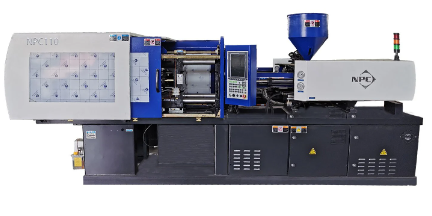

A well-known manufacturing technique called injection molding enables product departments to quickly produce huge quantities of interacting components with extremely high quality.
The procedure involves injecting melted plastic into a strong, temperature-controlled metal mold using a preheated, pressured nozzle.
After the molten plastic has cooled and solidified, the mold opens, the component is removed, the mold retracts, and the cycle is repeated
Due to its ability to produce components and products with long-lasting corrosion resistance and high-quality, economical production processes, plastic has grown into one of the foremost important industrial materials.
The design and implementation potential of plastic materials has only been improved by advances in plastic injection molding technology.
If plastic injection molding didn't exist, the present world would appear very different. Let's explore its past a little more.
The technology of making celluloid, a substance initially envisioned to substitute the ivory used for the billiard balls, was invented, and patented by inventor John W. Hyatt in 1868, marking the beginning of the origin of plastic injection molding.
The earliest injection molding device, created by Hyatt and his brother Isaiah in 1872, employed a straightforward plunger arrangement to force celluloid through a heated barrel and into the mold.
The invention sparked the growth of a thriving manufacturing sector that created celluloid brooches, combs, clips, collar holds, and several other products.
In the 19th century, cellulose acetate was made soluble, providing a significantly less volatile alternative to earlier materials. The majority of the thermoplastic materials utilized today were developed in the years before World War II.

During the Second World War, advances in military technology, such as fighter jets, marine naval ships, armored vehicles, and also other types of weapon systems, consumed enormous amounts of raw materials.
The post-World War II economic expansion in many industrialized European nations was accompanied by a surge in the need for inexpensive raw materials that could still be utilized for large-scale production of components.
This resulted from the war's disruption of international trade channels and the vast quantities of mineral resources that had to be extracted in order to make weapons, battleships, and a few other combat equipment, which caused a global dearth of rubber and metals.
Thermoplastics offered reasonably priced alternatives that may close almost all the gaps in the market caused by this lack of raw materials.
Injection molding became a pillar and landmark for contemporary industrial organizations as the global market and supply systems all around the world turned towards plastics.
James Watson Hendry, a native of the United States, created the first ever extrude screw injection machinery in 1946. Hendry improved control over the injection molding by incorporating a spinning screw.
As a result, the quality level significantly improved. After developing the extrude screw injection molding machine, Hendry wasn't finished. Not at all.
Hendry later invented the first gas-assisted plastic injection technique, a crucial development that made it possible to make lengthy, intricate, cylindrical items.
By the 1970s, plastic production had surpassed steel production because of polymers that offered greater strength and lighter weights.
Plastic injection molding had been utilized for over a century, even though the procedure may seem to be relatively new. The plastic injection molding sector has a promising future, as several new technologies have shown great potential.
Improved integration throughout the production system is possible, with technology such as sensors and control systems. This enhances businesses' capacity to produce higher-quality products at lower prices and improves efficiency in the plastic production system.
We are a major global manufacturer of plastic injection molding equipment and are experts in machine production with a wealth of experience.
The provision of machines and services that add value for our clients plus offering adaptable solutions for every problem is our trademark.
Do contact us to get long-lasting and efficient machinery for your plastic production business today.
By continuing to use the site you agree to our privacy policy Terms and Conditions.